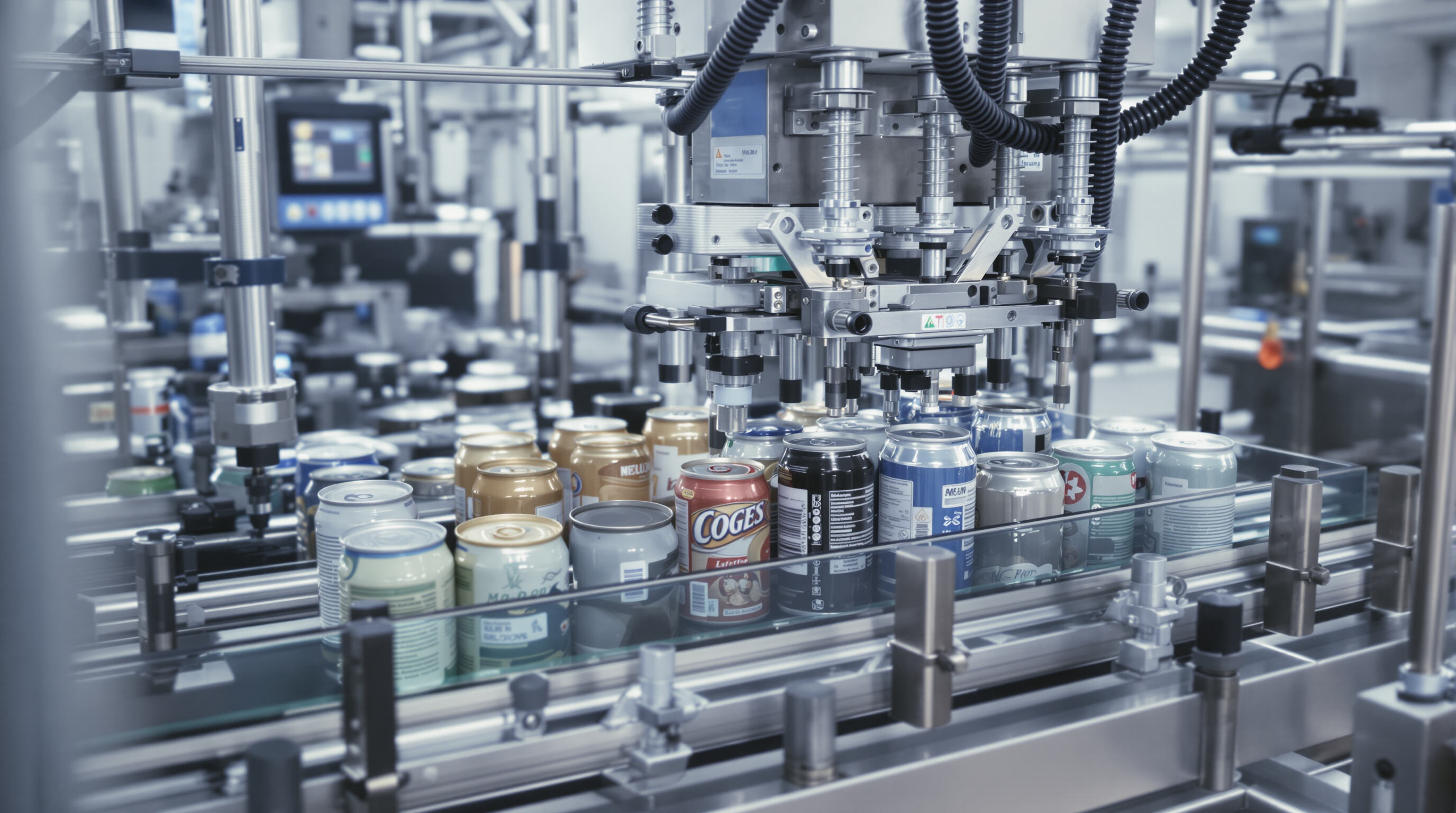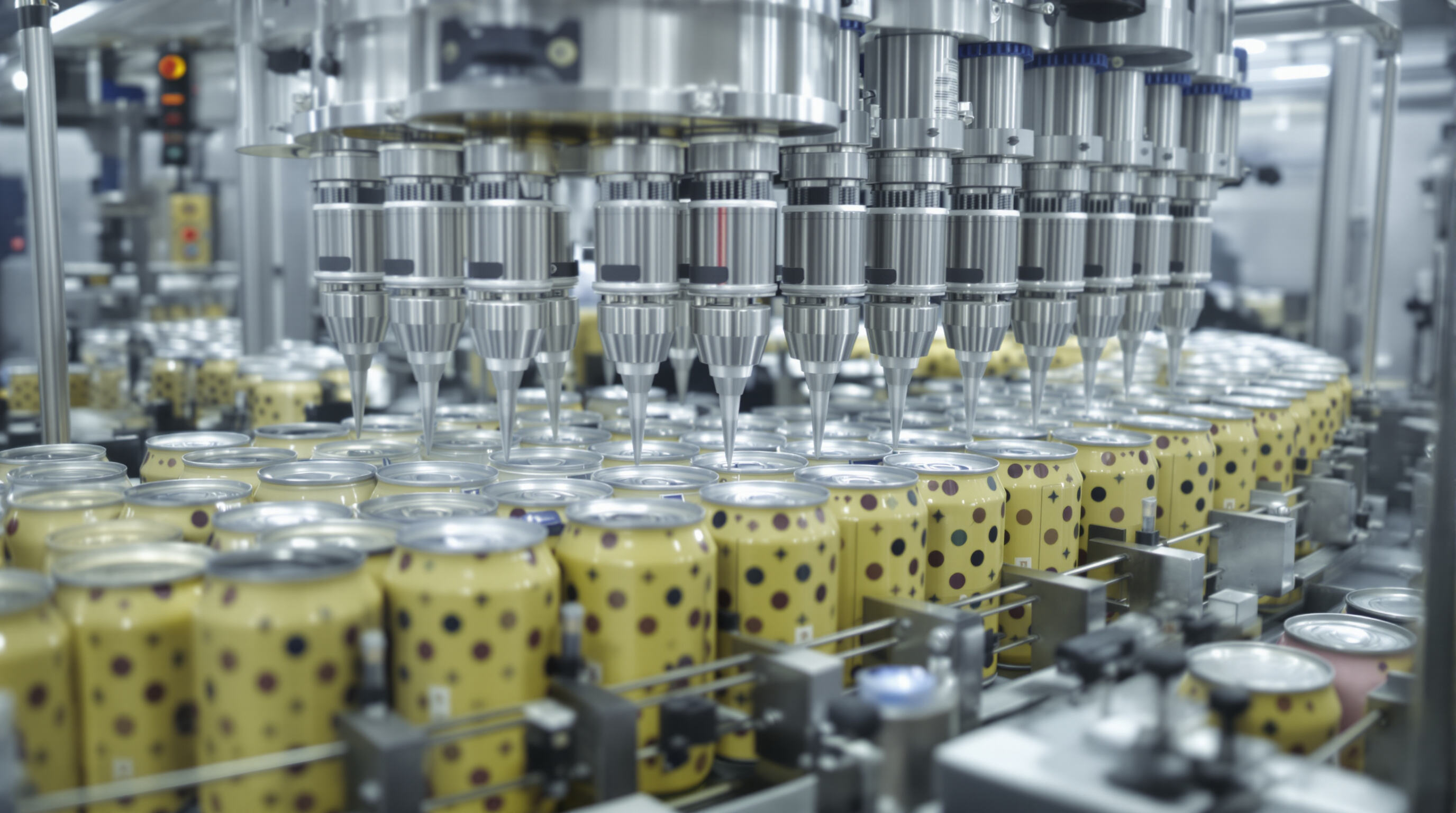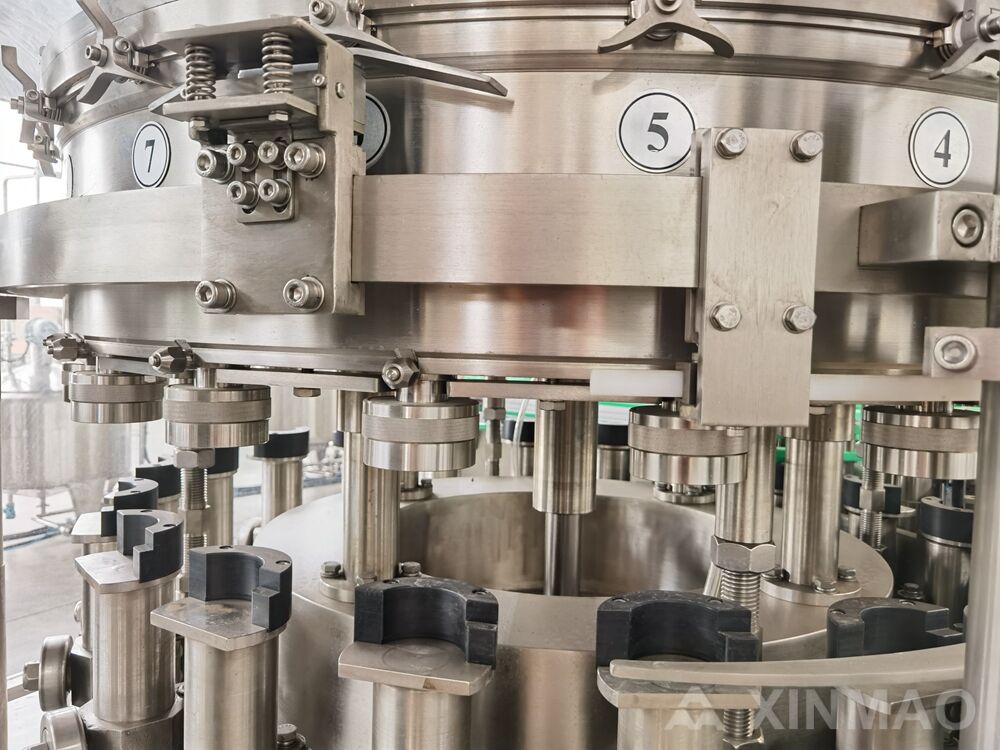Understanding the Role of Can Filling Machines in Modern Packaging
Core Function of a Can Filling Machine in High-Speed Production
Filling machines can handle the accurate dispensing of various substances including liquids, powders, and semi-solid materials into containers at impressive speeds, often surpassing 400 units each minute. The technology behind these systems typically involves servo driven volumetric control mechanisms paired with sophisticated sensor arrays that keep fill levels within a tight margin of error around plus or minus half a percent. This level of precision meets those strict FDA requirements as well as ISO standards that many companies need to follow when producing products such as bottled drinks or medications. When manufacturers install these closed loop contamination prevention features, they basically remove all possible human interaction points during production. Plus, these automated systems run circles around traditional manual methods, cutting down on processing time by anywhere from thirty to fifty percent depending on what exactly is being filled.
How Adaptability Enhances Operational Efficiency Across Industries
The latest generation of can filling systems really boost how quickly plants can adapt their operations. These machines come equipped with self adjusting parts and don't need tools when switching formats, handling sizes from small to large containers within a 12 inch range. Breweries love this because they can go from making those standard 16 ounce tallboys right into producing slimmer 8 ounce cans for specialty markets in just five minutes flat. According to various industry studies looking at automated processes, companies that invest in these versatile machines typically cut down on product changeover expenses by around three quarters versus sticking with old fashioned single format lines. That kind of efficiency makes all the difference during busy seasons or when experimenting with new products.
Key Mechanisms Enabling Can Filling Machine Adaptability to Size and Shape Variations

Adjustable Container Handling Systems for Seamless Format Transitions
The latest can filling equipment comes equipped with smart container handling tech that handles everything from small 50mm diameter cans all the way up to those larger ones measuring 150mm across, plus heights varying by as much as 300mm. What makes these systems stand out is their ability to adjust on the fly using retractable guide rails and those clever adaptive grippers that automatically recalibrate when faced with unusual shapes such as those hexagonal craft beer cans we've seen becoming so popular lately or even the slightly tapered designs used in certain specialty beverages. Looking at recent data from material handling reports, around 8 out of 10 format changes today take less than 15 minutes to complete, which represents quite a jump forward compared to just four years ago back in 2019 when it was taking almost twice as long to switch between different can formats.
Servo-Driven Adjustments and Real-Time Changeover Technology
Top tier production equipment now comes equipped with those fancy 10-axis servo motors that can tweak filling heads and adjust conveyor spacing on the fly while things are running. The result? Manufacturers can switch from making those little 202ml energy drink cans straight to big 946ml soup cans without having to shut down operations. According to industry stats, these automated systems cut down changeover time by around two thirds when compared to old fashioned manual methods. What's really impressive is how they keep cranking out over 300 cans per minute throughout all these switches in product formats. For plant managers looking to maximize efficiency, this kind of flexibility makes a world of difference in daily operations.
Modular Design and Quick-Change Tooling for Rapid Reconfiguration
Top systems come with components that can be changed without tools, including those handy interchangeable filling nozzles ranging from 20mm to 80mm in diameter. There are also magnetic neck adapters that work great on both wide mouth and narrow mouth cans, plus snap in seamer heads designed for either single or double seam jobs. The real benefit comes when switching production lines between different container types. Plants can move from aluminum cans to steel tins and even composite containers within just seven minutes flat. That kind of flexibility is essential for manufacturers who need to handle seasonal products like pumpkin spice drinks while still producing their regular inventory throughout the year.
Case Study: Switching Between 250ml Slim Cans and 500ml Wide Cans in Beverage Lines
A North American beverage producer reduced changeover time from 47 minutes to 9 minutes by implementing:
| Parameter | 250ml Slim Cans | 500ml Wide Cans | Adjustment Mechanism |
|---|---|---|---|
| Diameter Tolerance | ±0.2mm | ±0.5mm | Pneumatic clamp adjustment |
| Conveyor Pitch | 85mm | 120mm | Servo-driven chain spacing |
| Filling Head Height | 190mm | 250mm | Auto-lifting carriages with LVDT sensors |
The reconfigurable system maintained fill accuracy within ±0.8% across both formats while achieving 98.6% line efficiency demonstrating that adaptable designs do not compromise speed or precision.
Balancing Flexibility and Efficiency in Multi-SKU Production Environments

Meeting Rising Demand for Diverse Packaging Formats in Food and Beverage
Modern can filling machines support 47% more packaging formats than 2019 models, driven by consumer demand for sizes ranging from 150ml energy shots to 1L family beverage cans. Leading manufacturers achieve this versatility through swappable format parts that handle diameter variations up to 30mm while maintaining 99.5% fill accuracy across SKUs.
Automated Alignment and Format Synchronization with Upstream/Downstream Units
Advanced machines use laser-guided positioning systems to automatically align cans with labelers and cartoning equipment. This synchronization reduces format changeover time by 73% compared to manual adjustments, enabling simultaneous production of 8oz aluminum cans and 16oz steel containers on the same line.
Precision Fill Control to Maintain Consistency Across Can Types
Servo-driven filling nozzles dynamically adjust flow rates from 50ml/sec for narrow cans to 200ml/sec for wide-mouth containers to prevent product aeration in viscous substances like craft beer foam, while ensuring ±1% volume consistency regardless of can geometry.
Minimizing Overfill and Underfill Using Sensor-Based Monitoring Systems
| Technology | Waste Reduction | Speed Impact |
|---|---|---|
| X-ray fill detection | 89% less overfill | 0.5% speed loss |
| Capacitance sensors | 76% underfill prevention | 1.2% speed loss |
| AI-powered predictive flow | 92% waste reduction | No measurable impact |
The Trade-Off: High Flexibility vs. Maximum Line Speed
While modular can filling machines enable up to 12 format changeovers per shift, peak speeds are typically 18% lower than those of single-format systems. To mitigate this, manufacturers often deploy parallel micro-lines for high-volume SKUs while reserving adaptive systems for limited-edition or seasonal runs.
Customization Solutions for Specialized Applications
Modern can filling machines support tailored configurations for niche markets requiring specialized packaging. Over 82% of craft beverage producers use at least three can sizes, driving demand for machines capable of handling 12–32 oz containers and unique designs like slim or wide-mouth formats without sacrificing throughput.
Adapting Can Filling Machines for Craft Breweries and Niche Producers
Craft brewers benefit from swappable format kits that transition between 16oz tallboys and 12oz sleek cans in under 15 minutes. Adjustable neck handling systems also accommodate proprietary lid designs from small-batch coffee roasters while maintaining 99.8% seal integrity.
Adjusting Fill Volumes Without Compromising Hygiene or Accuracy
Servo-controlled filling heads allow precise adjustments from 250ml to 1L for products like kombucha or viscous sauces, all while meeting USDA hygiene standards. Built-in CIP (Clean-in-Place) modules automatically purge residual product between batches, reducing cross-contamination risks by 73% compared to manual cleaning.
Integrating Custom Filling Systems into End-to-End Packaging Lines
Modular designs enable breweries to integrate filling units with nitrogen dosing for stouts or UV-coding stations for limited-edition labels. One craft soda producer reduced monthly reconfiguration time by 68% when switching between 8oz retro cans and 19.2oz "crowler" formats.
Future Trends in Can Filling Machine Adaptability
Can filling machines of the future are going to have smart adjustment systems powered by artificial intelligence. These systems will adjust on their own to different can sizes, keeping things accurate whether dealing with skinny cans, wide ones, or those odd shapes that just don't fit standard molds. Sustainability is becoming really important in manufacturing these days, and experts see more companies switching to equipment that works well with eco-friendly materials that can be recycled or even broken down naturally. The new designs come with modular parts so changing formats takes less than 15 minutes thanks to easy swap-out tools. Plus there's built-in energy recovery tech that should slash electricity usage somewhere between 30 and 40 percent without slowing things down at all. For factories trying to meet stricter green rules and manage all sorts of product variations, this kind of technology isn't just helpful it's practically essential now.
Frequently Asked Questions
What is the main advantage of using a can filling machine in production?
Can filling machines provide high-speed, precise dispensing of materials, greatly reducing processing time while meeting stringent FDA and ISO standards.
How do can filling machines improve efficiency during product changeovers?
These machines feature self-adjusting parts and modular designs, enabling quick format switches without tools, resulting in significant cost savings and increased production flexibility.
How do modern can filling machines ensure precision?
They utilize servo-driven systems, smart sensors, and adaptive technologies to maintain precision, thereby ensuring fill level accuracy and minimizing product wastage.
What are the future trends in can filling machine technology?
Future trends include AI-powered adjustments, eco-friendly designs, modular components for quick swaps, and built-in energy recovery technology to enhance sustainability and efficiency.
Table of Contents
- Understanding the Role of Can Filling Machines in Modern Packaging
- Key Mechanisms Enabling Can Filling Machine Adaptability to Size and Shape Variations
-
Balancing Flexibility and Efficiency in Multi-SKU Production Environments
- Meeting Rising Demand for Diverse Packaging Formats in Food and Beverage
- Automated Alignment and Format Synchronization with Upstream/Downstream Units
- Precision Fill Control to Maintain Consistency Across Can Types
- Minimizing Overfill and Underfill Using Sensor-Based Monitoring Systems
- The Trade-Off: High Flexibility vs. Maximum Line Speed
- Customization Solutions for Specialized Applications
- Future Trends in Can Filling Machine Adaptability
- Frequently Asked Questions
